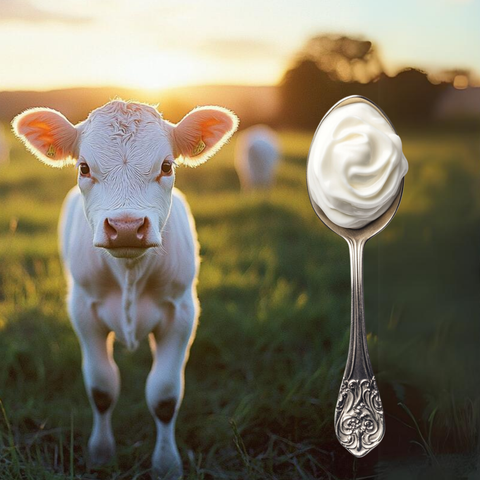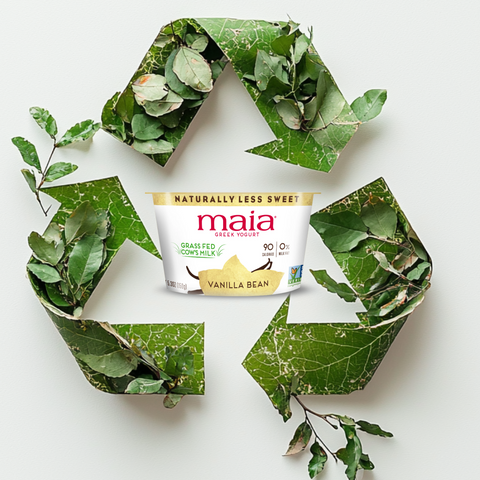100% Grass-Fed: The Best Way to Enjoy Dairy
Doing better for our world and our neighbors

From Pasture To Spoon
At Maia Yogurt, it all begins with our cows. Raised on lush pastures in the heart of Pennsylvania dairy country, our cows are fed a Non-GMO, 100% grass-fed diet, ensuring the highest quality milk. This wholesome approach not only leads to better-tasting yogurt but also provides milk that is rich in beneficial fatty acids and omega-6, essential for a healthy lifestyle.
When you choose Maia Yogurt, you're choosing more than just a delicious snack—you’re supporting cleaner eating and sustainable, humane farming practices. Each cup of yogurt brings us one step closer to a healthier world, both for you and for the environment.

Committed to Reducing Plastic and Waste
At Maia Yogurt, sustainability is at the heart of what we do. Our yogurt cups use 22% less plastic than standard yogurt containers, and our 32oz tubs use 50% less plastic than other brands. We are dedicated to minimizing our carbon footprint and even recycle our shipping materials to help reduce waste.
We believe it’s our responsibility to lead the way in eco-friendly practices. With packaging contributing to 63% of the U.S. solid waste, we’re taking steps to change that. By reducing plastic use and promoting sustainable packaging, we’re helping to keep landfills free of non-biodegradable waste, one yogurt cup at a time.
Reviews
- Choosing a selection results in a full page refresh.
- Opens in a new window.















